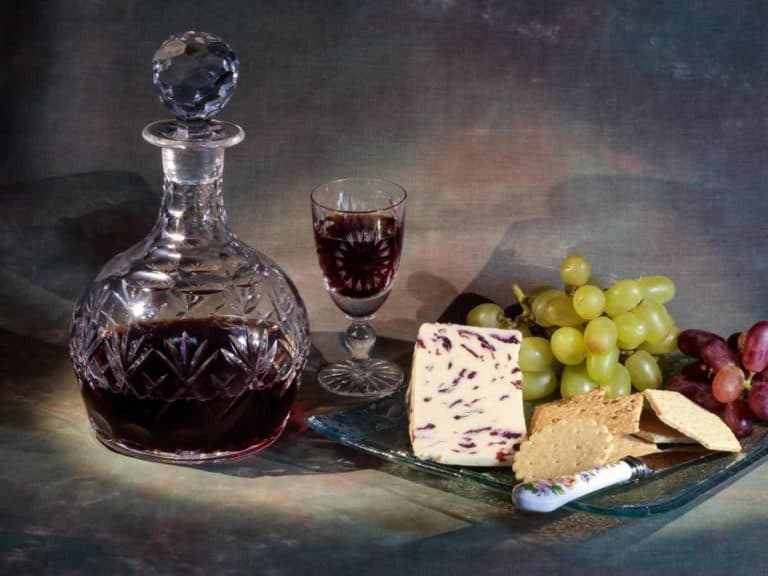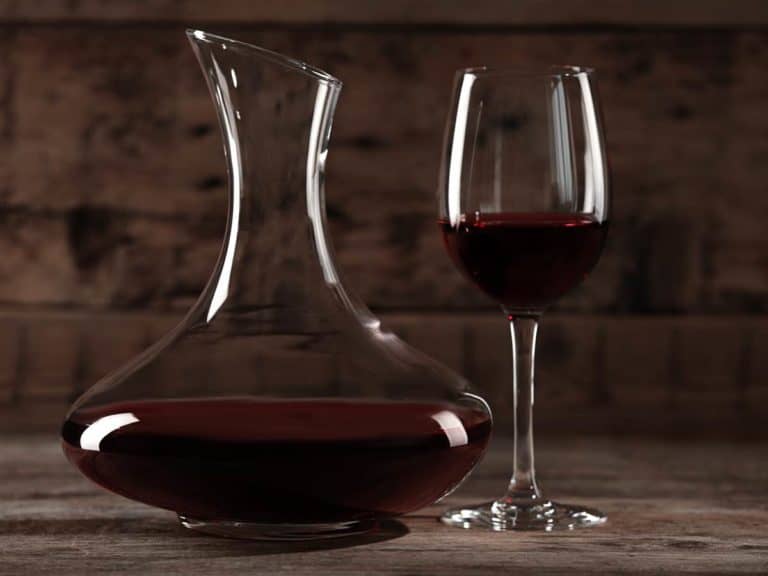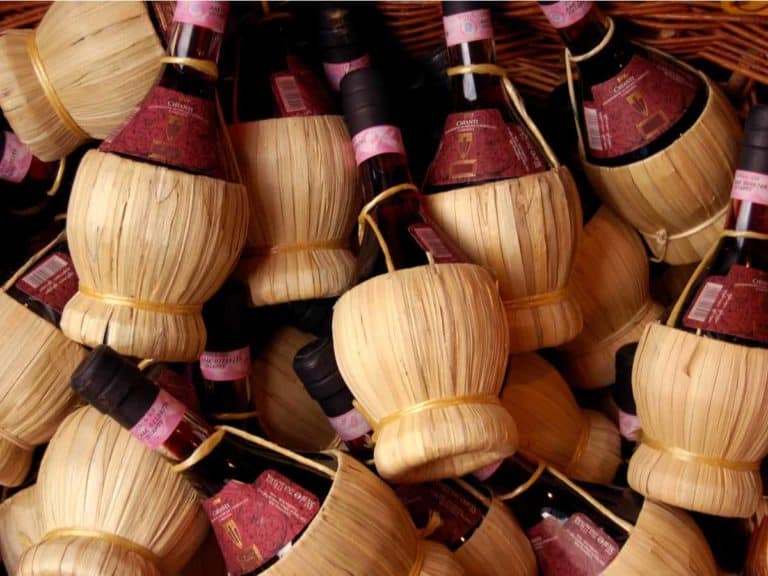Do You Know Which Rosé Wines Are Dry?
Rosé is a type of wine that’s pink in color. Rosés are made worldwide, with a variety of types of grapes. Rosés range in flavor from very sweet to very dry, so if you prefer dry wines, you may be wondering what types of rosés are dry.
Typically, the driest rosés are made from Tavel and Grenache grapes. They may also be made from Syrah, Cabernet Sauvignon, and a few other varieties of red grapes. When choosing a bottle of rosé, check the winemaker’s notes to see what types of grapes it was made with. You can also ask the sommelier if this isn’t listed on the bottle.
Below, we’ll discuss more information on dry rosés, as well as on rosés as a whole. Keep reading to ensure you choose the best bottle of wine!

How Rosé is Different From Other Wines
Rosé is one of the most versatile types of wines. Rosé typically has a floral, almost strawberry-like taste, and it’s generally low in tannins. Rosé is especially popular during the summer months, and it’s best enjoyed when chilled. It’s usually made from the same grapes used to make red wine.
Rosé is usually made by allowing the grape skins to sit with the juice for a short period during the fermentation process, giving it its signature pink color. There are a few differences that occur during this process, which dictate how dry or sweet the rosé will be in the end.
Sweet Rosé vs. Dry Rosé: What’s the Difference?
If you’re already a fan of wine, you probably know the difference between sweet and dry wines. Sweeter wines, of course, have a sweet taste to them, sort of like grape juice. Dry wines, on the other hand, have little to no sweet taste.
Despite popular belief, the level of tannins in a particular wine has nothing to do with actual “dryness.” Tannins are a naturally-occurring compound in the skins, seeds, and stems of grapes. When there are a lot of leftover tannins in a wine, it tends to dry out your mouth.
For this reason, many people confuse a high level of tannins for dryness. However, all “dryness” refers to is the lack of sugar in a wine.
All wines, including white, red, and pink, have varying levels of dryness. Some rosés are incredibly dry, while others are very sweet. The fermentation period is the factor that most influences how dry wine will be.
Related Article: Is Rose Wine a Mix Of Red And White?
How the Fermentation Period Affects Rose Wine Dryness
In general, all types of wine are fermented for approximately two weeks. Some winemakers stop the fermentation process at this point, while others continue. The length of time a wine is allowed to ferment is the most significant factor influencing dryness.
During fermentation, the naturally-occurring sugars in grapes transfer to the wine. While some of this sugar will remain in the wine, the longer it ferments, the more it will break down.
Sweeter wines are fermented for less time, leaving more residual sugar. Dry wines are fermented for longer, and therefore, have little to no sugar leftover in the end.
This is typically the reason why dark red wines, such as Cabernet Sauvignon and Merlot, are often both dry and high in tannins. The fermentation process requires that the skins sit with the fermenting juice to give it its deep red color. Because these skins need to sit with the juice for a significant period, the result is often a drier wine that’s high in tannins.
This property usually extends to rosé, as well. That’s why you’ll notice how darker rosés (those that are medium to dark pink in color) tend to be drier than paler pink rosés.
Is Rosé Wine Always Dry?
Despite popular belief, all rosé wine does not taste the same. Just like red and white wines, it ranges in flavor from incredibly dry to very sweet, often depending on the type of grapes it was made with.
Some of the most popular rosé wines include Pink Moscato and White Zinfandel. Both of these are sweet wines, which leads many people to believe that rosé is actually inherently sweet.
Whatever it may be, most people have a preconception about how rosé wine will taste.
When choosing a rosé wine, make sure to always read the label. This is important, because even small differences can affect the flavor and sweetness of a rosé.
Some bottles mark the grape varietal, while others do not. If you cannot find what type of grapes the wine was made from, read the winemaker’s notes to get an idea of the taste profile.
In general, the driest rosé wines are made in the French Provencal region. They are also often made from the driest red wine grapes available, with one of the most popular being Grenache.

List of Dry Rosé Wines
There are three different types of dryness when it comes to wine. These include:
- Very dry
- Semi-dry
- Dry
“Very dry,” as the name suggests, is the driest variety of wine available. “Semi-dry” comes next, with “dry” following. Below, we’ll discuss all the varieties of rosé wine available that are considered dry.
Very Dry Rosé Wines
The driest varieties of rosé wine include those made with Grenache grapes, as well as those produced in the Tavel region of France. Each of these varieties has its own flavor profile, and they pair well with different foods.
Grenache Rosé
Grenache rosé, sometimes called Provence rosé, is produced primarily in the Provence region. Grenache grapes produce some of the world’s driest rosé, and they’re sometimes blended with Syrah and Cabernet Sauvignon grapes for a unique flavor profile.
Grenache rosés typically have fruity notes, including grapefruit, berries, and watermelon. They also tend to have light floral and herby notes. Like most rosés, Grenache is served best when chilled and pairs well with spicy, aromatic foods. Try having Grenache rosé with Moroccan, Greek, or Indian food, as well as any dishes that are heavy in tomato or red pepper.
Tavel Rosé
Tavel rosé refers to rosé produced in the Tavel region, usually Rhone Valley, of France. This type of wine is also heavily composed of Grenache grapes, but it’s known for its more tannin-heavy flavor.
Tavel rosé is often popular among red wine drinkers. It has similar notes of the summer fruit you can taste in other Grenache rosés, but with some nutty flavors added. It pairs well with strongly-seasoned, hearty meats, such as roasted chicken.
Semi-Dry Rosé Wines
If you’re looking for something a little less dry than the above-mentioned options, try a semi-dry rosé. These include those made with Syrah, Mourvedrè, and Cabernet Sauvignon grapes. These wines are often darker in color than your typical rosés because the grapes they’re made with are very dark.
Syrah Rosé
Syrah rosé is a bold wine usually deeper in color than your average rosé. It has a lot of tannins and is considered to be much “heartier” than other varieties. Syrah grapes, also known as “Shiraz,” originated in France. However, winemakers across the world have had great success growing these grapes.
These wines are usually not as fruity as other rosés. When you drink a Syrah, expect notes of plum, cherry, and blueberry, as well as hints of red pepper and a smoky flavor.
While it still tastes excellent chilled, it doesn’t have to be served as cold as most rosés. Because of its spicy, peppery flavors, it often pairs well with cured meats, paella, and stews.
Cabernet Sauvignon Rosé
Those familiar with Cabernet Sauvignon usually think of red wine. However, this type of grape is also a trendy choice for making rosé! It’s used worldwide and typically makes a darker rosé than most other grape varieties.
Cabernet Sauvignon rosé tastes more like a red wine than most other rosés, but it’s much more acidic than red Cabernet Sauvignon wine. Unlike other wines, it’s not aged in oak.
This gives it a more acidic, citrusy taste. You can also often taste notes of pepper, cherry, and tobacco. It pairs best with light flavors, like seafood and vegetables.
Mourvedre Rosé
Mourvedre grapes originated in Spain but later moved to France, where they thrived in the Mediterranean climate. Mourvedre rosés are full-bodied wines with fruity and herby notes, including peach, citrus, pepper, and peppermint.
On the palate, you’ll notice the flavor or Mourvedre becomes richer. You might notice a smoky, meaty flavor, with hints of cherry. Mourvedre rosés are best served with different tapas, antipasti, and lighter types of fish and vegetables.
Dry Rosés
The following varieties of rosé wine, including Tempranillo, Rosato, and Pinot Noir, are a little less dry than those discussed above. If you like your wine medium-dry, you might want to try one of these.
Tempranillo Rosé
Tempranillo rosé has many of the same qualities as Provence rosés, but it’s prevalent in the Rioja region of Spain. It typically has a pale pink color and is sometimes blended with Graciano or Grenache wines for extra floral notes.
In pure Tempranillo rosé, you can expect notes of watermelon and strawberry. In addition, expect some unique spicier, peppercorn flavorings. Because of its unique flavors, it pairs exceptionally well with tacos, as well as grilled seafood and beef.
Rosato Rosé
Rosato wine is made with Sangiovese grapes, one of Italy’s top grape varieties. It’s often called “Rosato,” which means “pink” in Italian, wine instead of Sangiovese wine, but you may see it in the store under either name.
While Sangiovese grapes are rarely used in rosés, the rosés made with these grapes have notes of red fruit, including strawberry and raspberry, as well as clove, cumin, and allspice. It pairs very well with spicy foods, such as Indian curry, but also works with traditional Italian dishes like Caprese salad and prosciutto.
The sweetness of Rosato wine will vary by winemaker, so make sure to read the label carefully to see where it falls on the sweetness scale. Typically, however, older varieties will be drier than newer varieties.
Pinot Noir Rosé
Pinot noir grapes are grown all over the world, but they do especially well in cool climates that see a lot of rain. These rosés share the bright, acidic notes of Provence rosés but have an overall earthier taste.
Pinot noir rosé is very delicate on the palate, with notes of strawberry, white cherry, and melon. Because of their fruiter flavor, they work very well with goat cheese, seafood, and French spices.
Tips for Choosing the Best Rosé Wine
With so many varieties available, you may find it difficult or overwhelming to choose the perfect dry rosé. Here are a couple of tips to help you choose.
Consider Your Current Tastes
Perhaps you’re new to rosé but already know what you like in terms of either red or white wines. Choose your favorite red or white wine, and check the bottle to see where it falls on the sweetness scale.
For example, red Cabernet Sauvignon is considered a very dry wine. If this is your favorite, look for a very dry Grenache or Tavel rose.
Related Article: Fruits That Pair Best With Rosé Wines
Ask for a Tasting
Some specialty wine stores will offer customers a tasting before they purchase a bottle of wine. If your favorite wine store has an on-site sommelier, ask if you can taste the rosé you pick out before you buy it. This is the best way to learn whether or not you’ll enjoy a particular variety.
Try Something New!
If you’re really not sure where to begin, you could always find your favorite rosé by purchasing and testing out a couple of different varieties. You could ask the salesperson for a recommendation based on your tastes or choose a couple at different points along the sweetness scale and see which you prefer.
Final Thoughts on Dry Rose Wines
If you are a fan of dry wines, you might be interested in testing out a couple of dry rosés. Rosé is an incredibly versatile type of wine, and different varieties fall all along the sweetness scale. The driest rosé wines include Grenache and Tavel, but Syrah, Cabernet Sauvignon, and Pinot Noir are also incredibly popular among dry wine fans.
Consider your current tastes and where your favorite wines fall in terms of dryness. Choose something with a similar level of dryness, and see what you think!
Read Next: How to Buy Rosé Wine: Ultimate Guide





